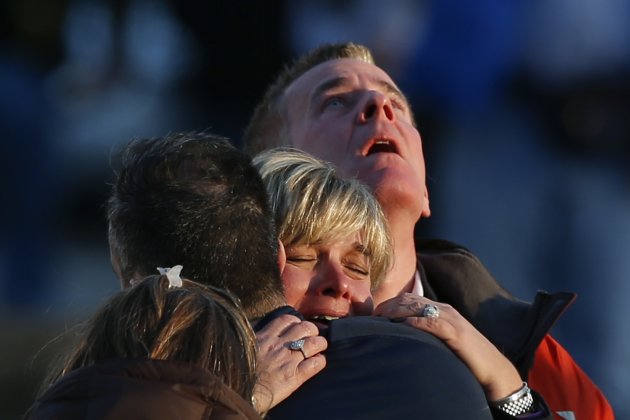Perhaps the single most
identifiable item associated with the innocence of childhood is the Crayola
crayon –and has been for over 100 years.
No doubt, this holiday season millions of children all over the world will
receive a box full of crayons and a coloring book that will make them smile.
By chance, I was asked to
speak at the Crayola Factory to their employees about heart health, only days
after the unspeakable tragedy in Connecticut and only a few days before
Christmas. Like so many parents, I was deeply saddened by the killing of
innocent children at the Sandy Hook Elementary School. How quickly the photos
of families crying in pain became seared in our minds and will not be easy to
forget. It was difficult to comprehend and yet in so many ways, it was so real,
and hit so close to home.
I was literally driving
around town trying to clear my mind of this sadness so that I could think of a
few positive words to tell the employees at the Crayola Factory about how to
live a healthy and fulfilling life. I
was clearly not in a creative mood. All
at once it dawned on me the obvious connection between the children of
Connecticut and our hometown company, the Crayola Factory. Indeed, the connection was obvious --it was
the comfort, joy, and even the smell of a simple crayon and its symbolism as
part of the innocence of childhood.
I
could not help but imagine that the children who died had Crayola crayons in
their little desks, or perhaps even more tragically, in their tiny hands when
that evil madman ended their lives. I
imagined the many colorful drawings that likely hung in those classrooms as the
horror unfolded, or the unopened
Christmas presents that surely included crayons and coloring books. I began to
cry.
Just then, I heard a CNN
reporter on the radio interviewing the Sandy Hook Elementary School
librarian. The librarian told the story
of how she quickly shuffled the children in her classroom into a storage closet
as soon as she realized that there was a shooter in the building. The children were all so frightened, as was
the librarian. Sure enough, the
librarian saw that there were boxes of crayons and coloring books in the
storage closet and instructed her students to draw happy pictures, as she
reassured them that “the good guys were on their way.”
Later
that evening, I listened to the President’s remarks to families of Connecticut.
After his call for peace and hope, I realized further how thousands of children
from across the country –if not the world—would draw pictures to share their
thoughts and well wishes for all those saddened by this national tragedy. No doubt, these heartfelt drawings and cards
of hope would be done beautifully, yet again, with the comfort of a simple
crayon.
When
the day of my talk came, I stood in front of the employees of the Crayola
Factory and thanked them. I shared with them my reflections above and simply
said...
“To think, that the very company you work for, a company that has been
synonymous with childhood, was literally present at this elementary school,
both in the desks and hands of those whose lives were cut short, and in the
hands of those who survived. Imagine for a moment, that in so many ways, a part
of each of you were present with these kids, comforting them in their last
moments, helping yet others to survive. As a father of two beautiful young
daughters –who I love more than life—I want to start by thanking each and every
one of you at Crayola, for your quiet, but oh so important contribution to all
children.”
It
felt so surreal that my talk at Crayola, planned months prior, would happen to
fall at this time. And yet, I felt so privileged to be at Crayola, to thank
them in person. We joined hands, closed our eyes for a moment of reflection and
simply said together, “May God bless all the children of the world.”














